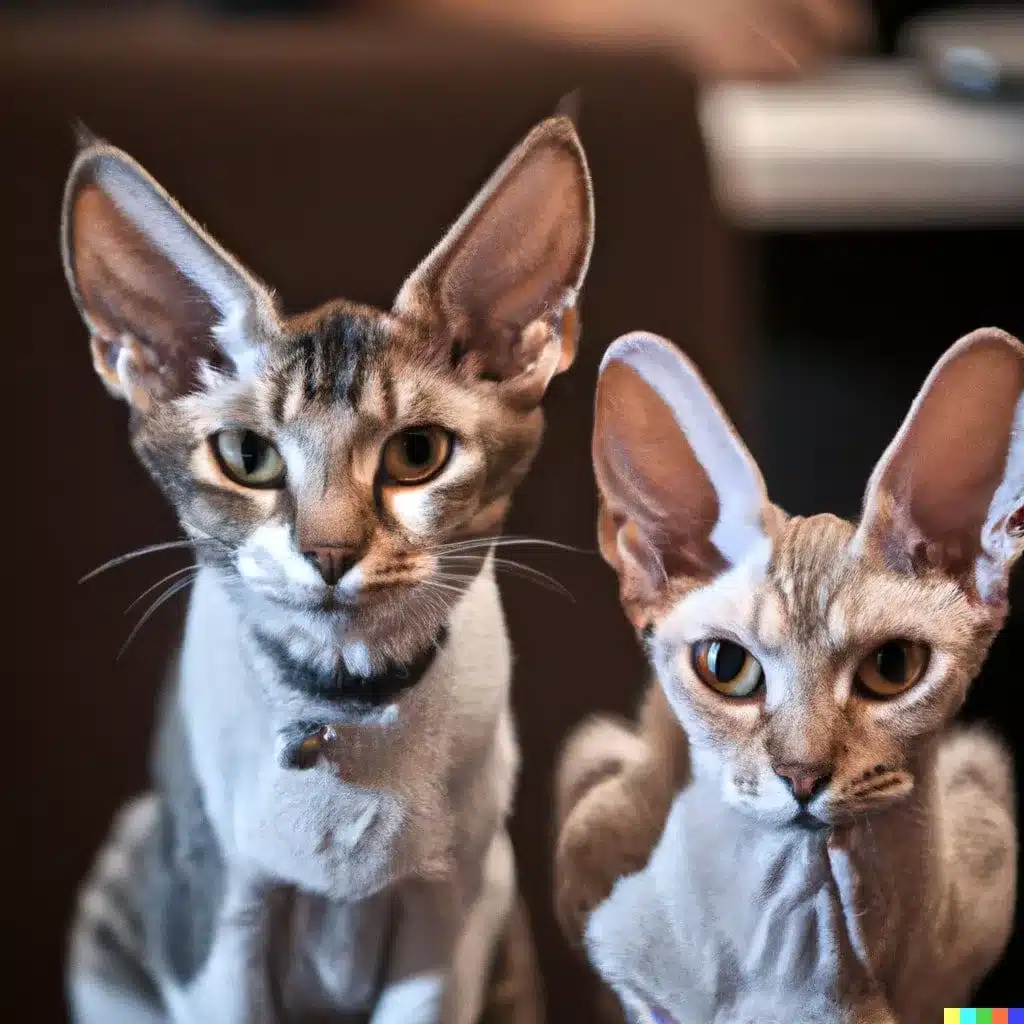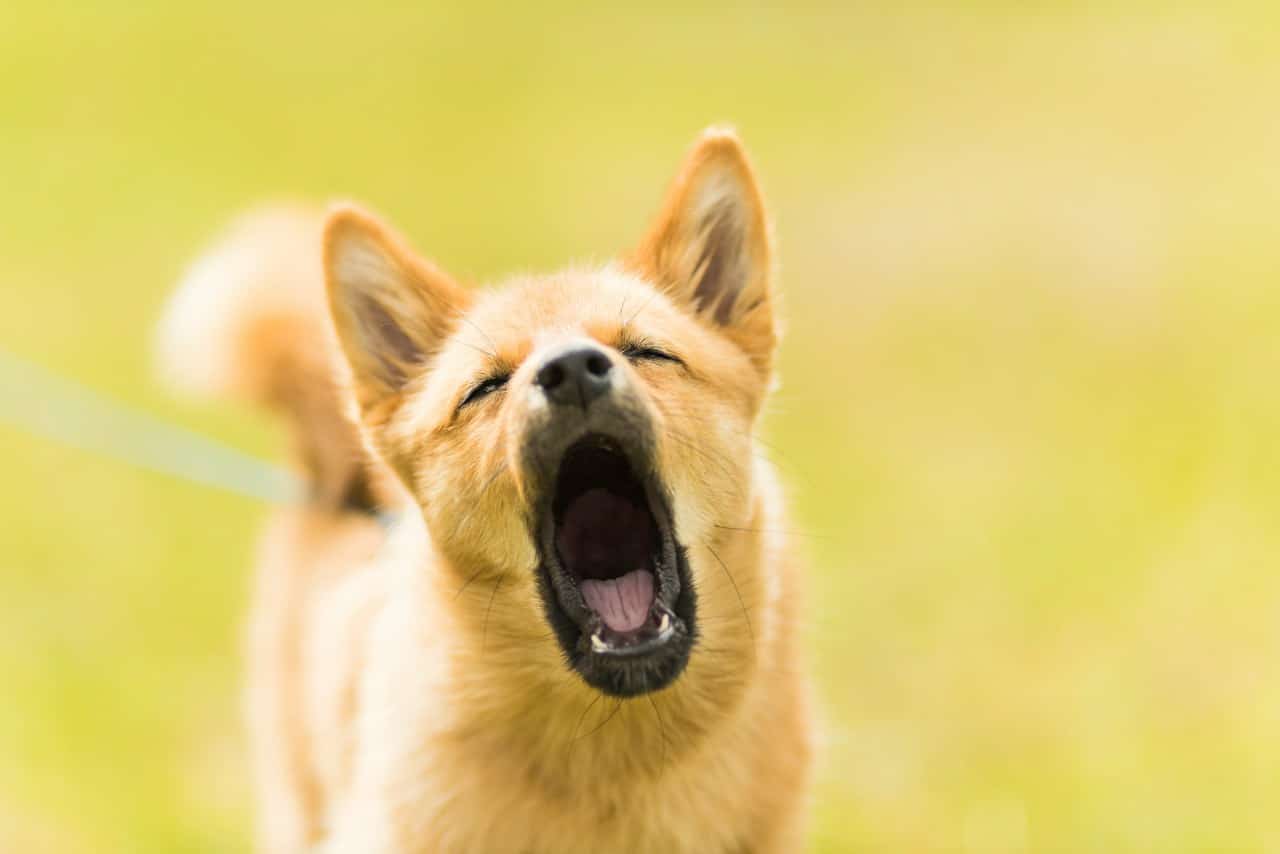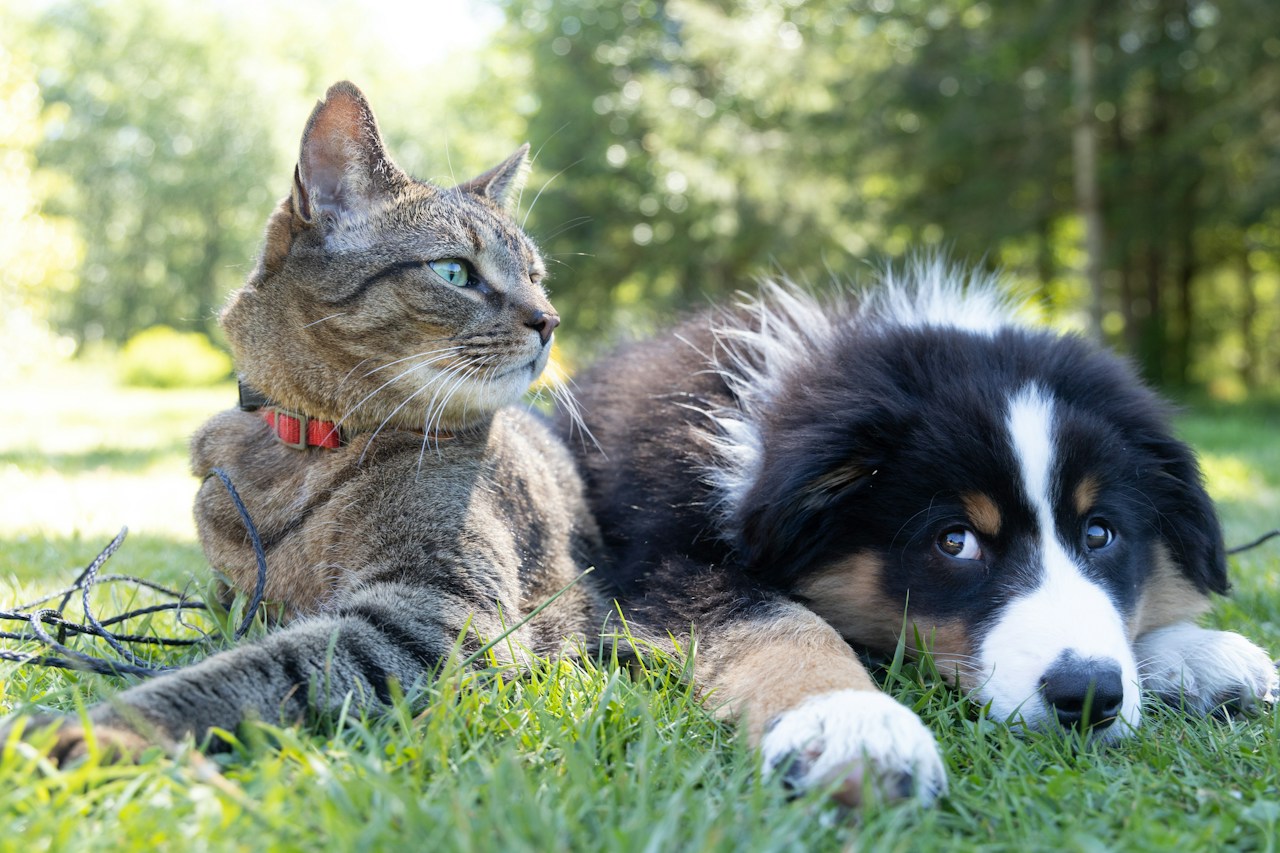We adore our cats, from the tips of their fluffy tails to their adorable triangle noses. And while every cat is different in its own way, some breeds are notable because of how they look. Some cat breeds have ears that are so large that they resemble those of an animal other than a cat. Other cat breeds are fluffy, have no hair, have green eyes, or are hairless. We adore them because of their large ears, which are a characteristic of their breeds. Your day will be brightened by these cats with big ears.
In the wild, cats’ larger ears frequently served an important purpose by allowing them to hear potential threats and prey. So, let’s take a look at some of these stunning big-eared cat breeds.
Table of Contents
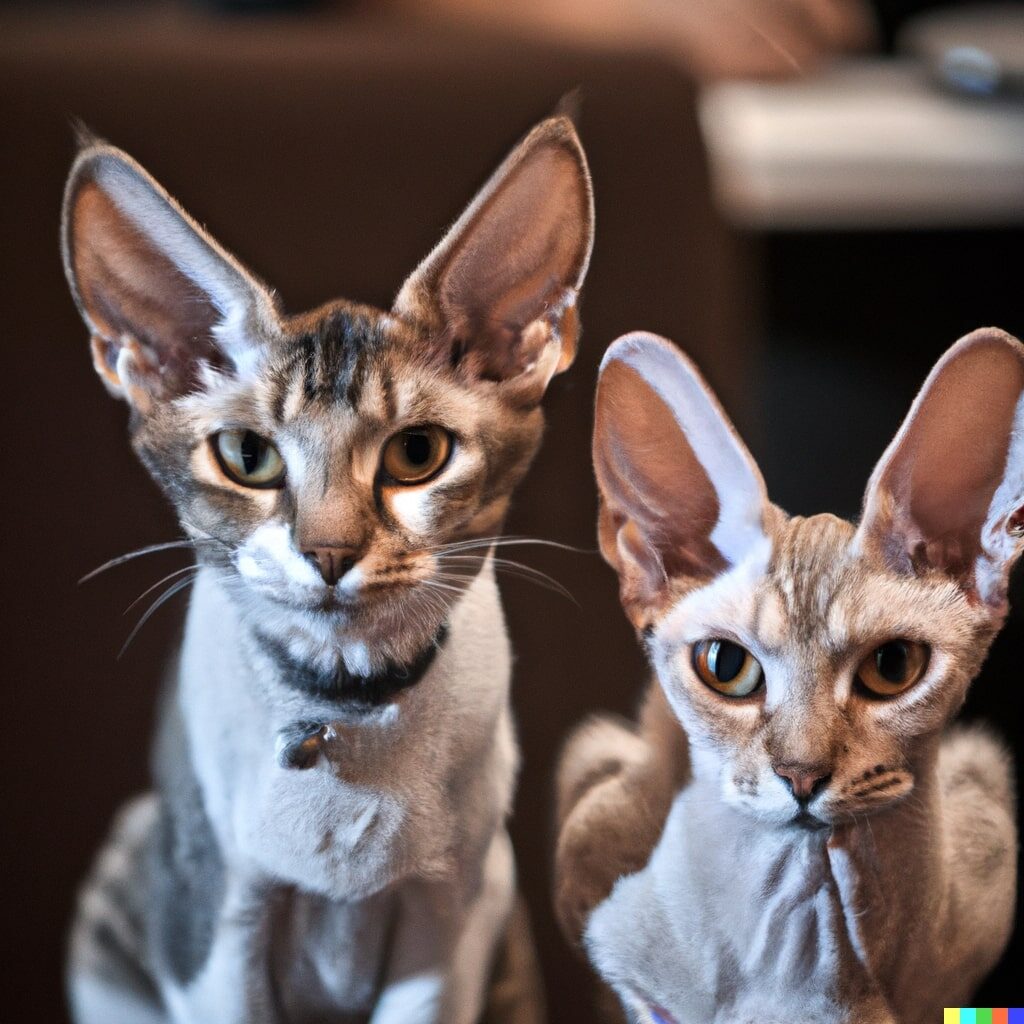
Cats are adorable pets for a variety of reasons, including their soft fur, long tails, and, of course, their perceptive eyes. However, it can be argued that their ears, which are located at the top of their heads, are cuter the larger they are. This list of 16 cat breeds with large ears was put together so you could see them in all their adorable glory!
Also read: How long can cats go without food? When should I become concerned if my cat isn’t eating?
The 16 Cats With Big Ears
1. Russian BlueCat
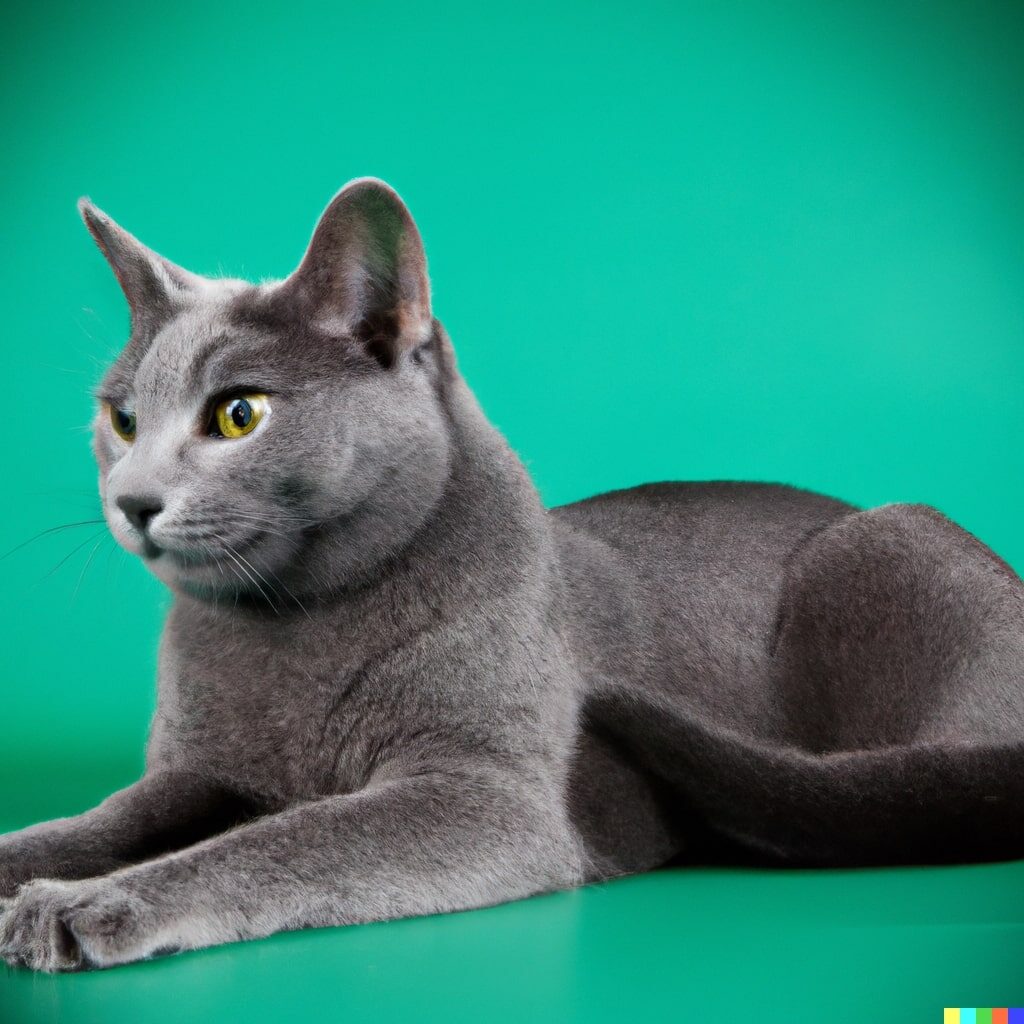
You can immediately identify the Russian blue and understand how they got their name. Their recognizable blue coat can range in color from silver to deep blue and grey. Typically short and coarse, their stunning coat protrudes stiffly from their body. They have a reputation for being affable and very smart, but they are also somewhat reserved and tranquil, preferring to explore their surroundings with their curious nature rather than play.
Read: How long can cats go without food? When should I become concerned if my cat isn’t eating?
2 . Sphynx Cat
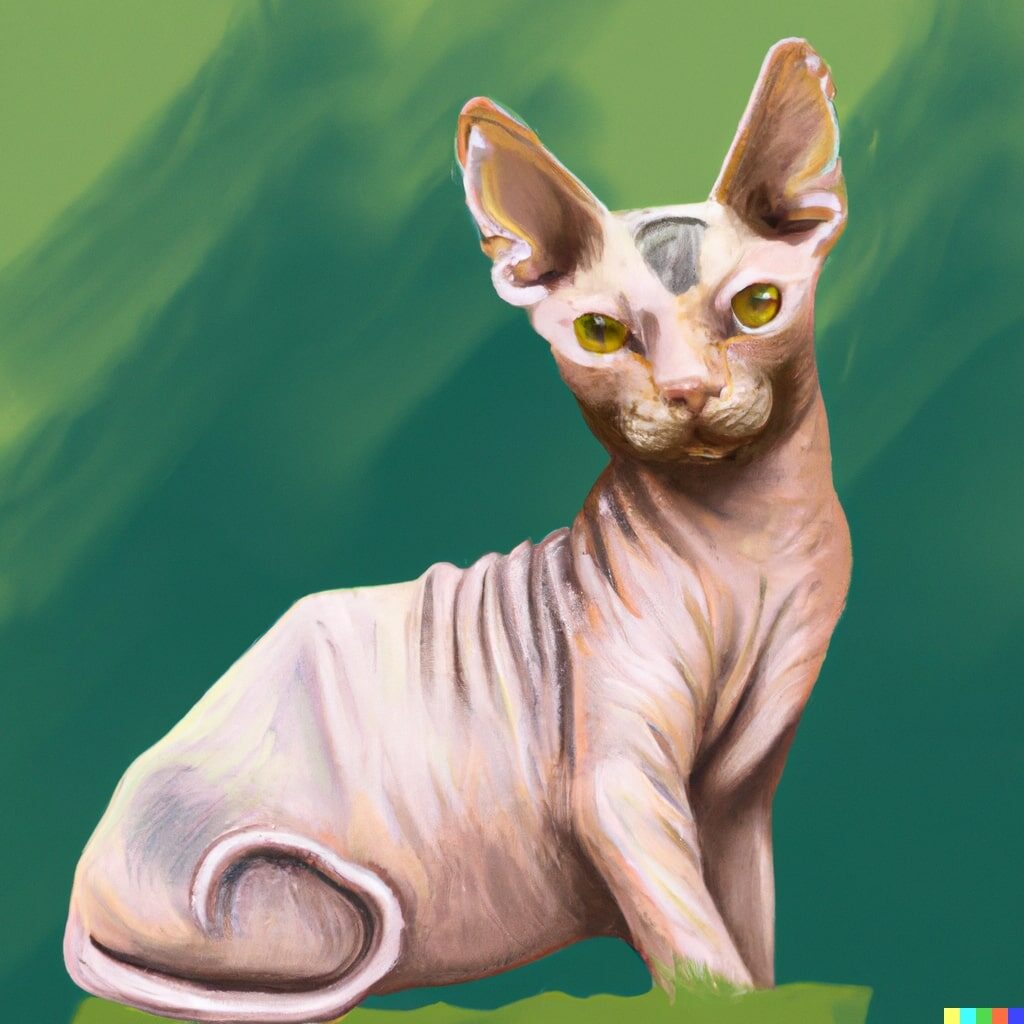
Most people are familiar with the Sphynx breed because of its coat—or, should we say, lack of one? Large ears are a characteristic of hairless cats in general, and the sphynx is no exception. The absence of hair in cats typically results from a genetic mutation that occurs naturally, but the Sphynx was created through selective breeding. Due to their high demand, rarity, and high price, these cats are a very distinctive and attractive breed of cat due to their large ears.
3. Bambin cat
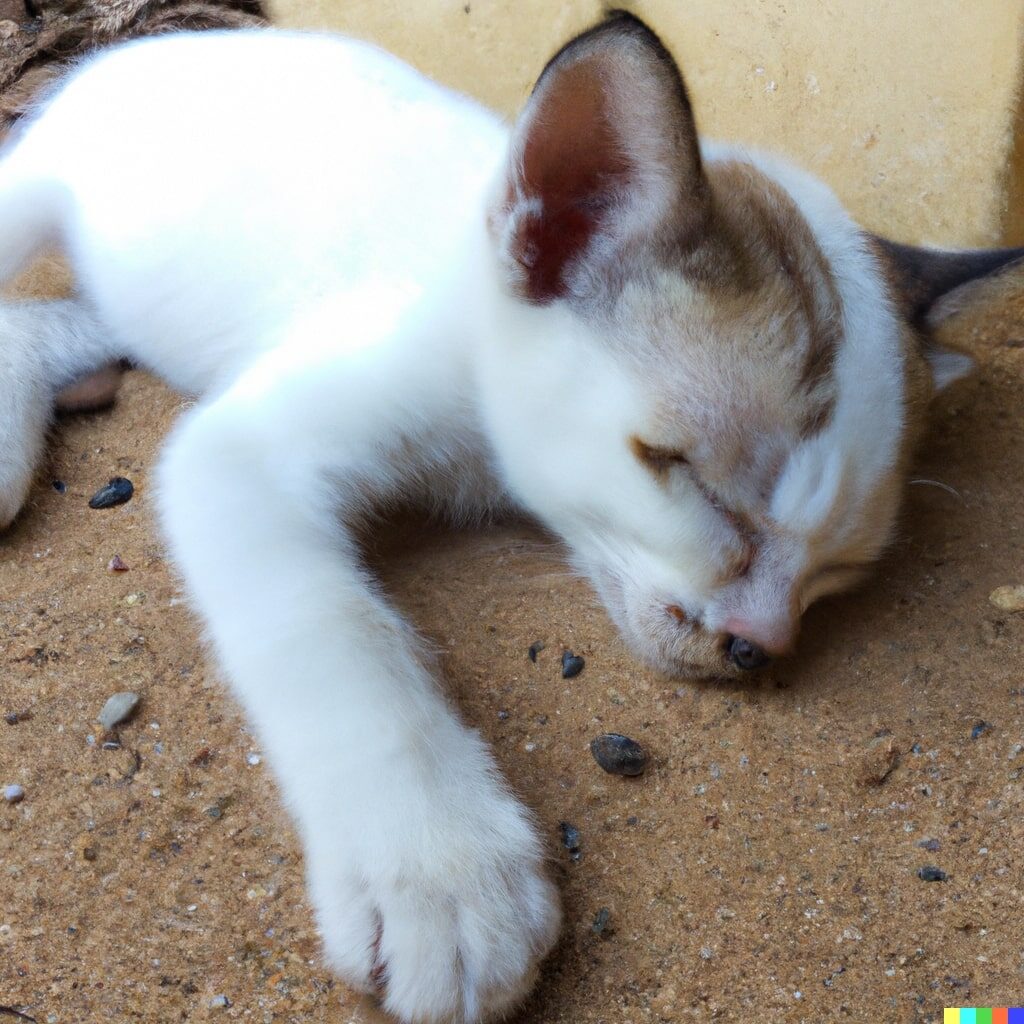
The Sphynx and Munchkin cat breeds were crossed to create the new and contentious Bambino, which has a higher risk of developing health problems than either parent breed. Few details about the breed are known as of the 1995 registration of the first letter. They occasionally have hair, but not always, and get their Egyptian parents’ big ears.
4. Abyssinian

It is thought that these short-haired, large-eared cats got their name from Abyssinia, where they were first domesticated. The individual hairs of their distinctive coat are banded with various colors, giving it the name “ticked” tabby coat. They also have distinctive tufts that protrude from the tips of their large ears. They are vocal, playful, and very affectionate cats that have a distinctive trill that resembles a bird.
5, OrientalCat
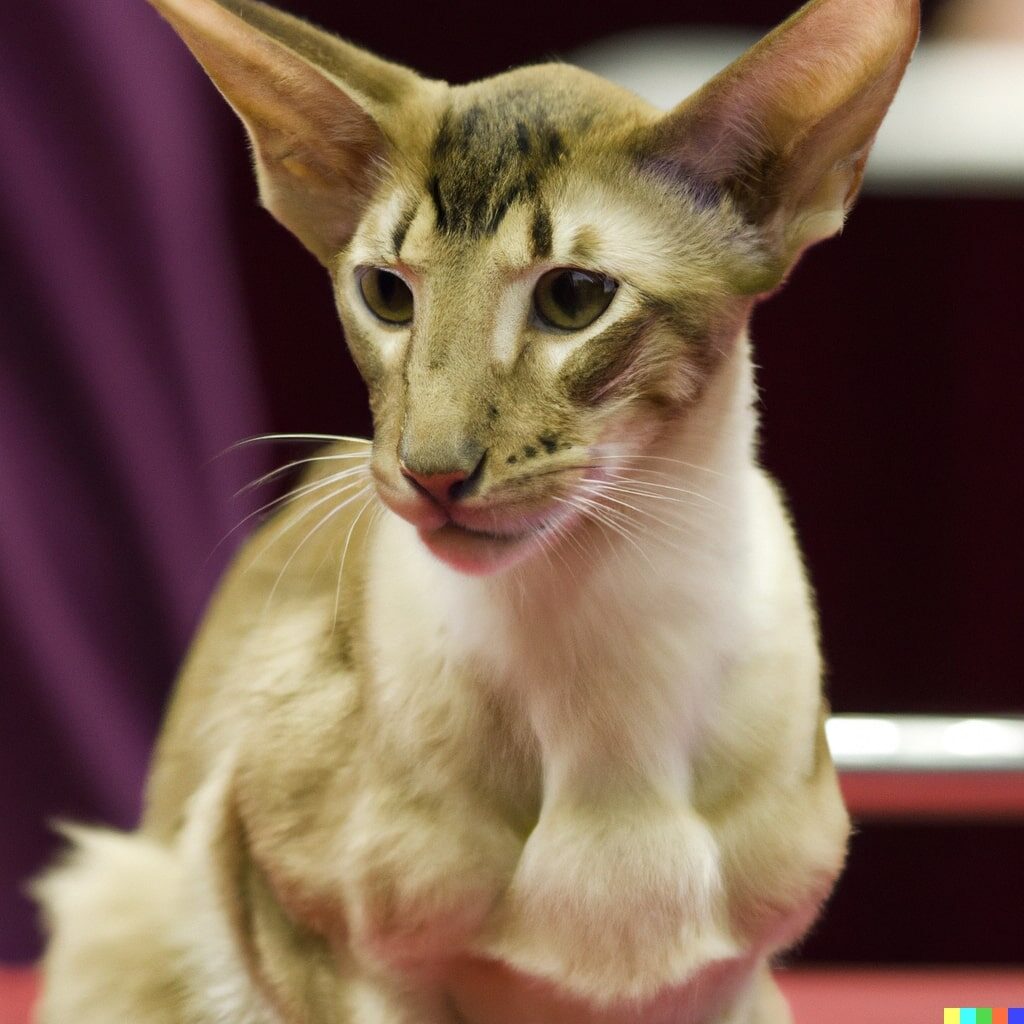
Orientals with long or short hair both share the Siamese breed’s long ears as a distinguishing feature. They have similar traits to their Siamese cousins in that they are social, playful, and frequently vocal cats. Their coats, which come in a variety of hues and patterns, are what set them apart most. Since the breed’s genetic origins are in Thailand, it has grown to be one of the most well-liked among Cat Fancier Association members.
6. Balinese Cat

The Balinese and their close cousin, the Siamese, have sapphire blue eyes and distinctive point coloration in common. As a result of their natural mutation from the Siamese breed, the Balinese are frequently referred to as “purebred long-haired Siamese,” with the only real distinctions being their longer coat and fluffy tail. The original breeders gave them the more concise name Balinese after deciding that the longer Long-Haired Siamese Siamese was too wordy.
7. Devon Rex
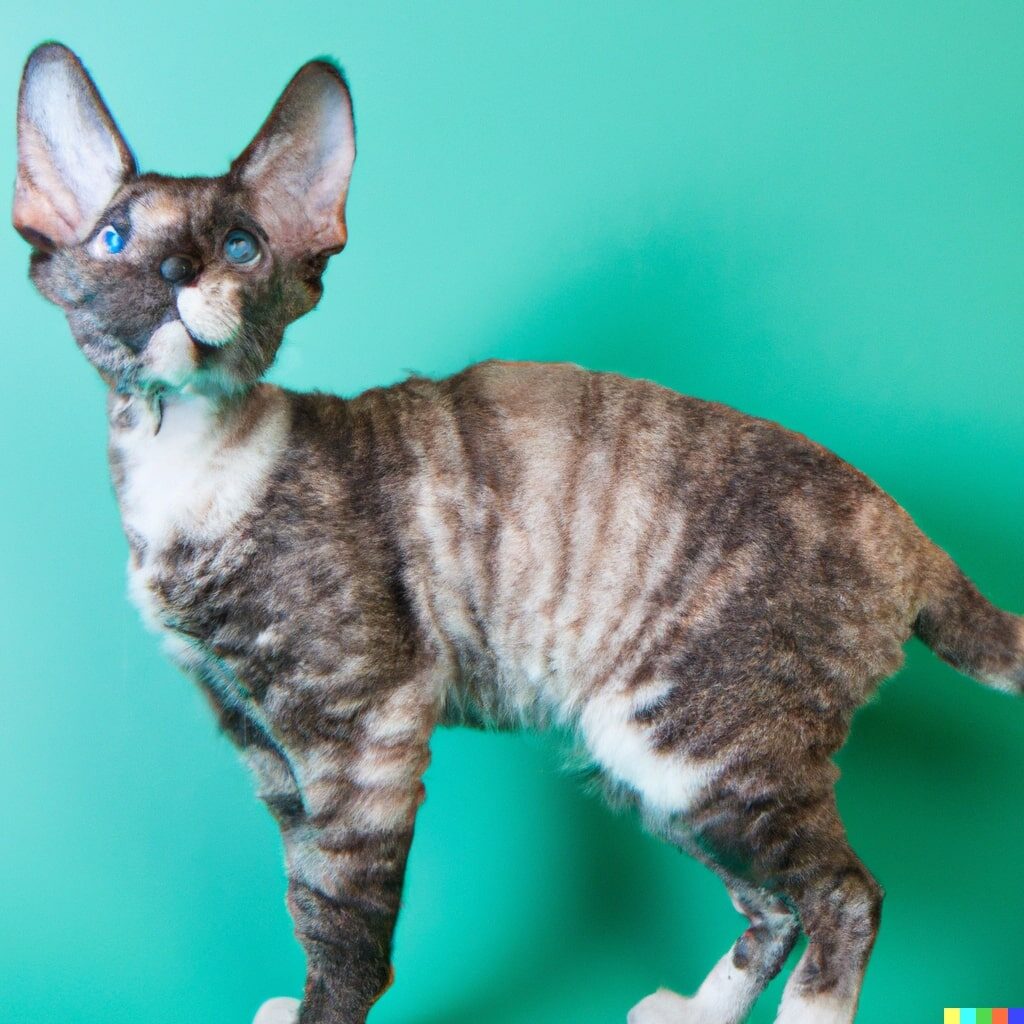
Although the Devon Rex and the curly-haired Cornish Rex look similar and are related, the Devon Rex is a completely different breed due to the genetic mutation that gave rise to their coat. Due to their unusual appearance, which is emphasized by their large, rounded ears that sit unusually low on their heads, they are frequently referred to as “alien” cats. Their short, curled whiskers, which frequently give the impression that they are absent, are another distinctive characteristic.
8. Ocicat
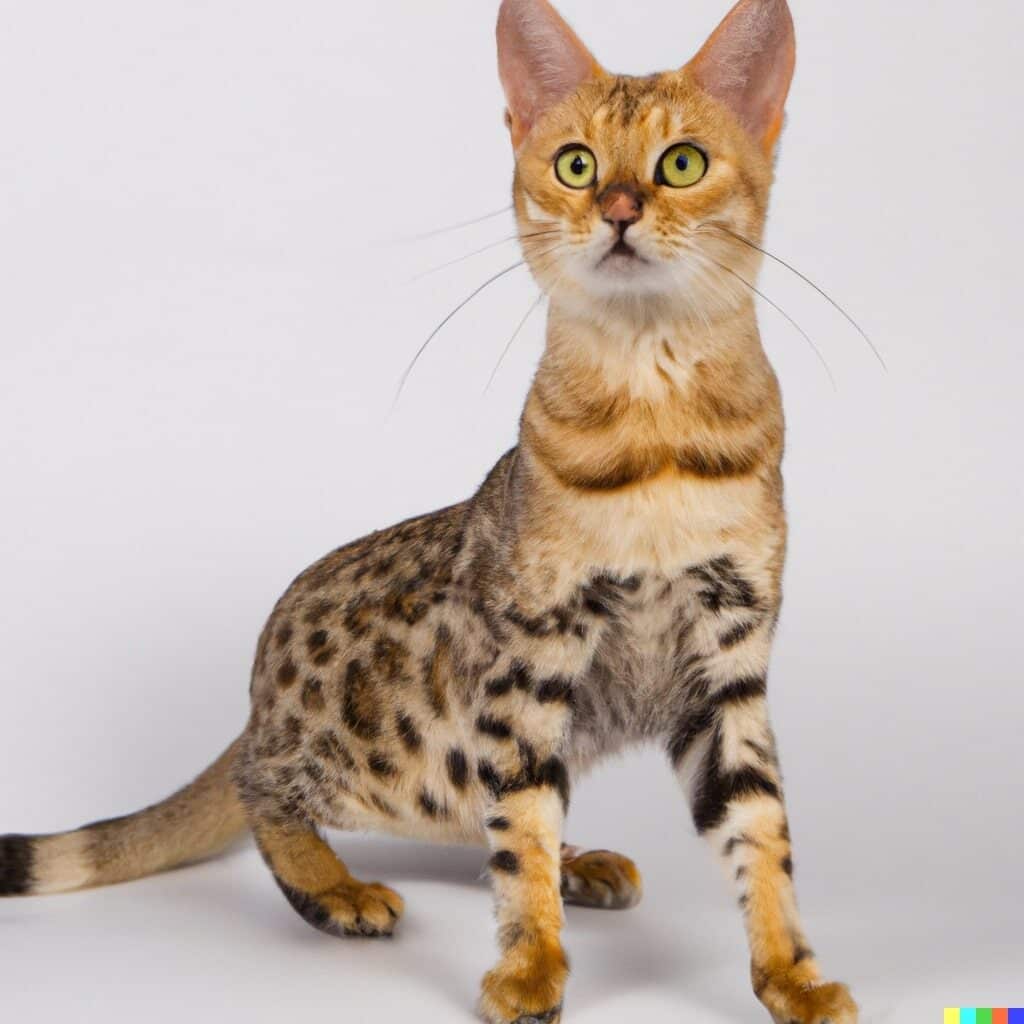
You could be excused for thinking that the domestic breed known as the Ocicat contains wildcat genetics. Although it appears to be a wild animal due to its spotted coat and recent lack of wild DNA, its calm and docile demeanor quickly reveals its domesticity. Its name refers to the small wildcat native to North and South America called the ocelot.
9. Savannah Cat

The Savannah is a hybrid of a domestic cat and the Serval, a medium-sized, large-eared African cat. Since its initial registration with the International Cat Association in 2001, this exquisite breed has grown in popularity. They are loyal, friendly animals that frequently follow their owners around the house, despite having a wild heritage. Be cautious where you hide their food because these highly intelligent cats are known to open doors and cabinets on their own.
10 . Singapura Cat

The Singapura cat is the tiniest domestic cat breed and is distinguished by its large ears and eyes. They rarely weigh more than 8 pounds and have a lovely ticked coat that is typically several shades of brown. They love to be in high places to get a bird’s eye view of their home and are energetic, playful, and inquisitive. Although there is disagreement regarding their true ancestry, the majority of breeders concur that the cat is from Singapore, where they got their name.
11. Chausie

The Chausie was created by crossing a few species of wild jungle cats with domestic cats, giving them their wild appearance that is further accentuated by their large ears. With their high sets, broad, round ears, and deep chests, the kittens resemble lion cubs. They are playful, active, and smart cats with a lifelong interest in their surroundings.
12. Egyptian Mau
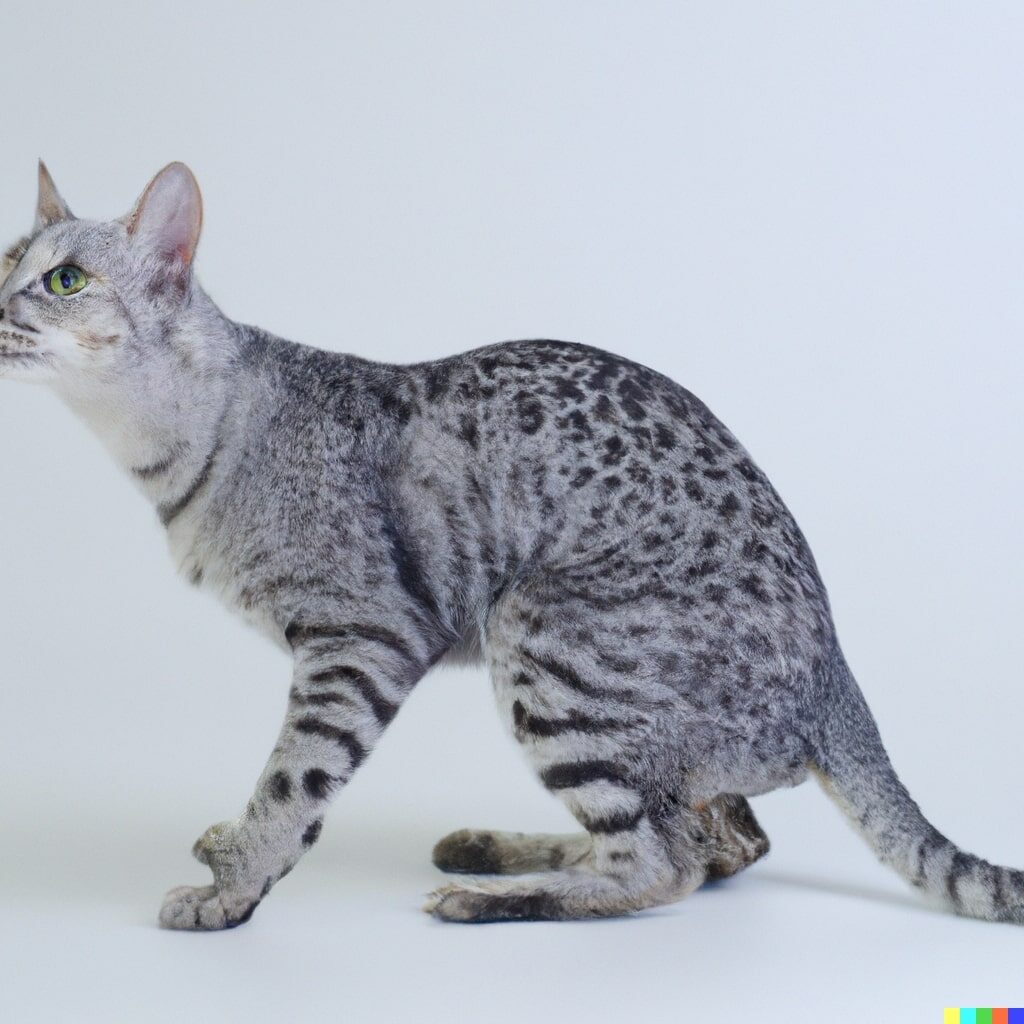
One of the few domestic cat breeds with naturally occurring spots is the Egyptian Mau. They have medium-sized bodies and gracefully patterned, medium-length coats. Less than 200 kittens of this rare breed are registered each year, making them extremely rare. They typically have distinguishing green eyes, large pointed ears, and a distinctive “scarab beetle” or “M” marking on their forehead. These cats are extremely sensitive to drugs and anesthesia.
13. Siamese Cat
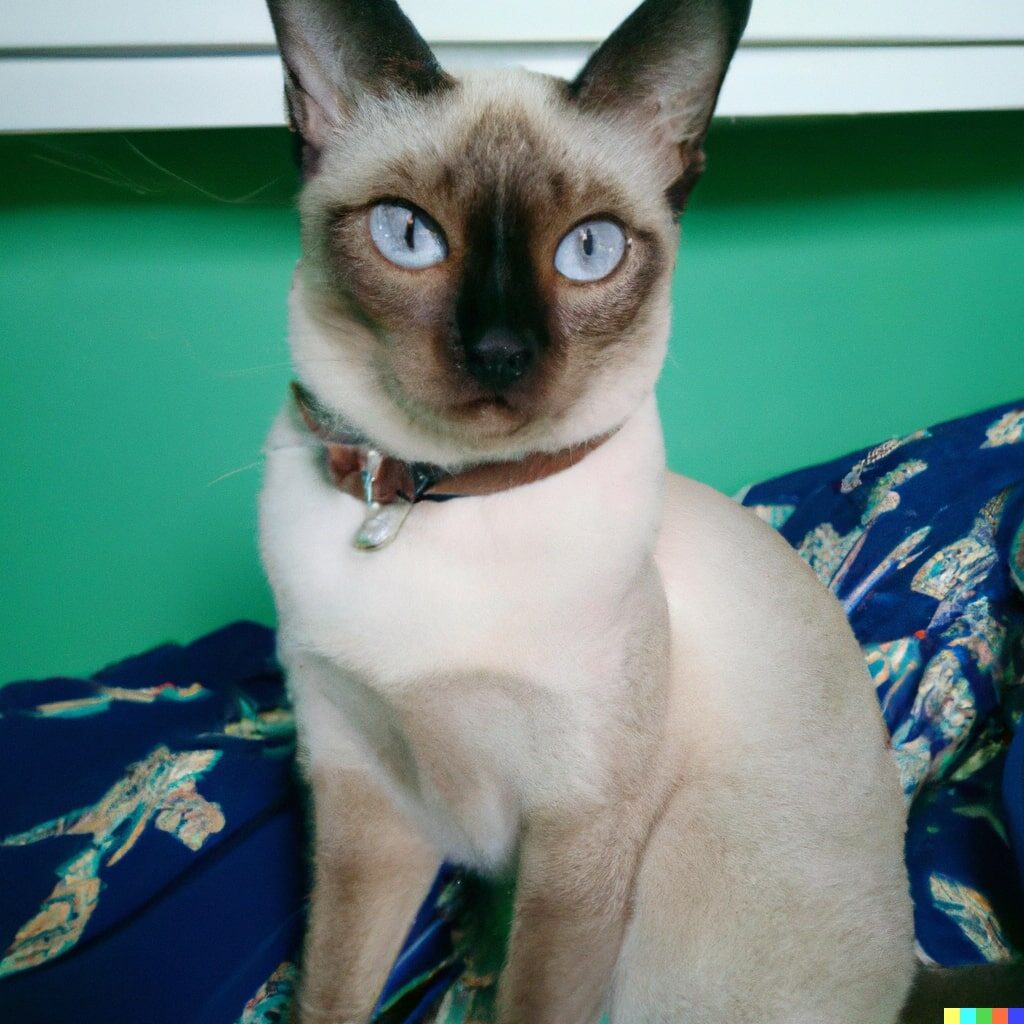
One of the most well-known Asian cat breeds and one of several that are indigenous to Thailand is the Siamese. They are elegant, long, slender cats with smooth coats that are typically a blend of cream, chocolate, and black. The intelligent Siamese cat is also very devoted to its owner. Understandably, the ears appear larger than they are given the creature’s long and slender legs, body, and tail.
14. Peterbald
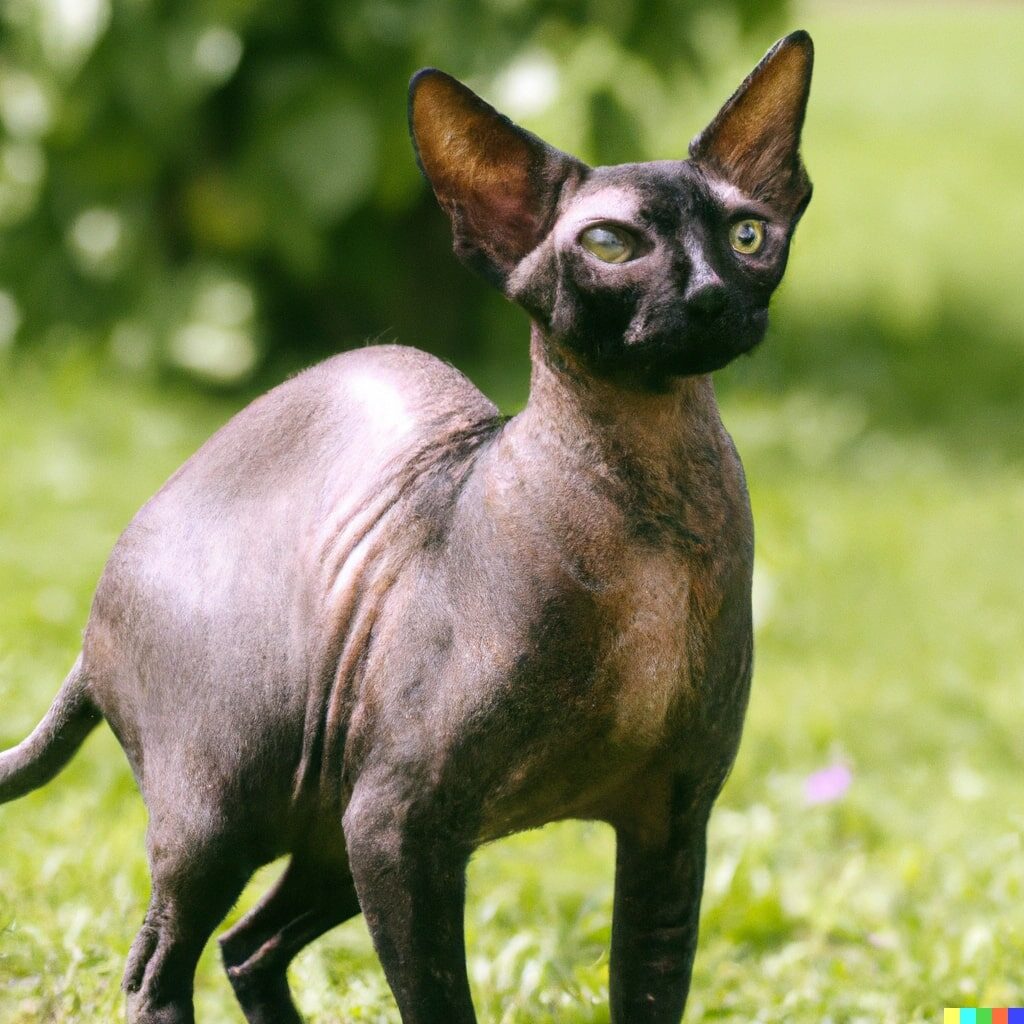
The Peterbald, also known as one of the hairless cat breeds, can have distinctive coat variations. These variations include “brush,” “flocked,” and “velour,” but breeders favor total hairlessness. They are affectionate and playful cats who adore being the center of attention. These cats may need more food than coated breeds because of their high metabolic rates.
15.Donskoy Cat
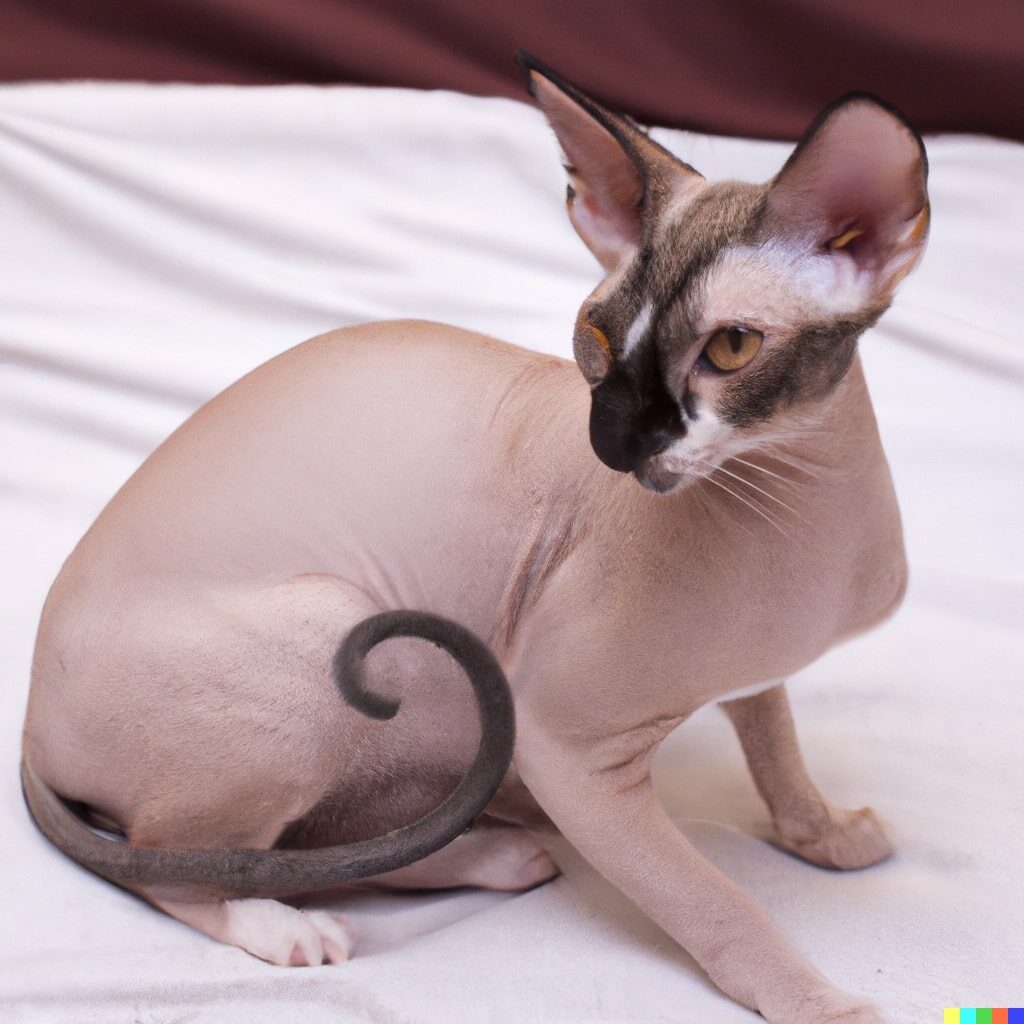
The Donskoy, also known as the Russian Hairless or Don Sphynx, is a breed of hairless animal that originated in Russia. They resemble Sphynx Cats in appearance, but they are not related, and they lack hair due to a dominant gene mutation rather than the Sphynx Cat’s recessive mutation. They are muscular, medium-sized cats with long, webbed toes and wrinkled skin. Due to their fierce loyalty and attachment to their owners, they are frequently referred to as cats that behave like dogs.
16. Cornish Rex
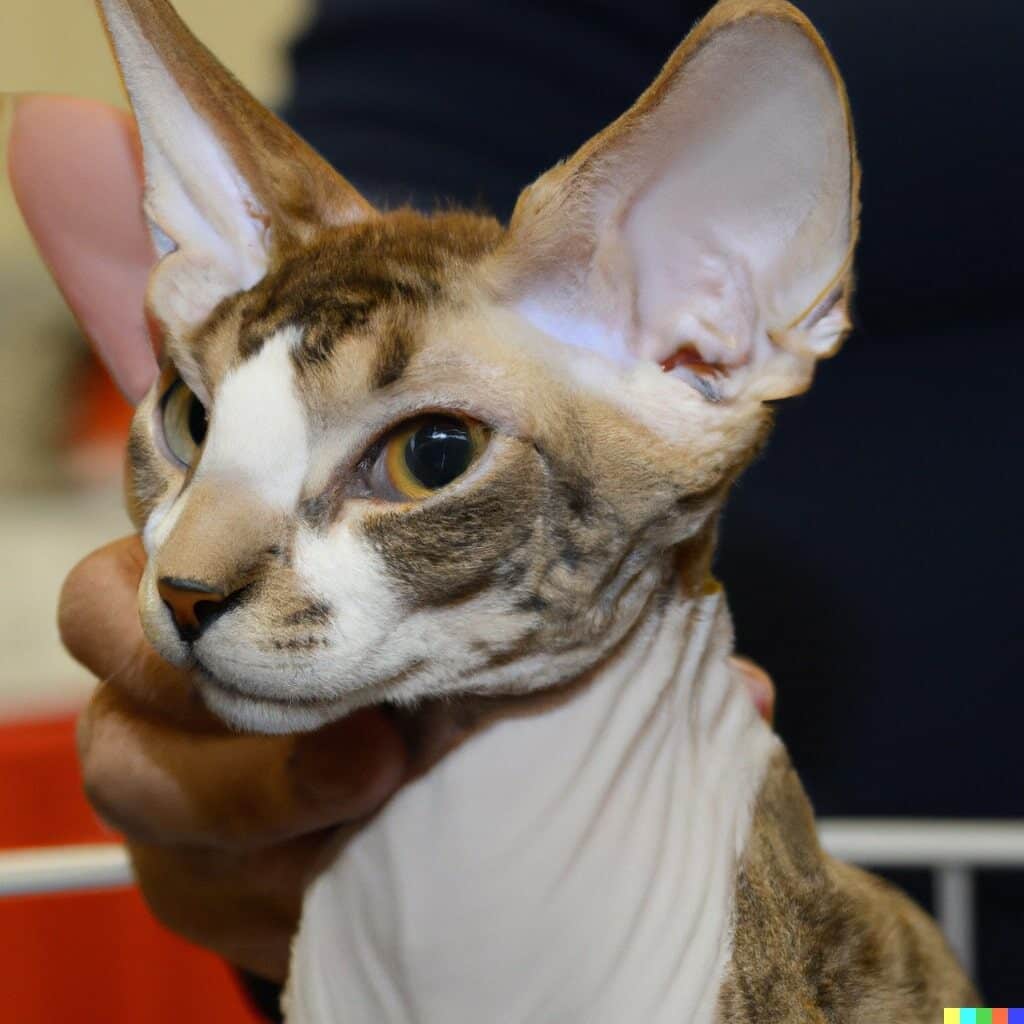
The Cornish Rex is a domestic breed frequently referred to as the “Greyhound” of cats because of its furry appearance. Their undercoat, which makes up almost all of their short, silky, and soft fur, forms waves along their torso. These cats eventually lose the majority, if not all, of their hair due to the proneness of their soft, curly coat to hair loss.
Also read: Porkie dog . Breed Characteristics
References: Russian Blue
